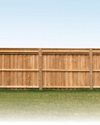
1 CUT THE GROUT
Using an angle grinder with a masonry wheel, cut through the grout down to the subfloor all around the tile. Cutting the grout avoids chisel and hammer work that could crack adjoining grout lines.
2 REMOVE THE OLD TILE
Poke a screwdriver tip into the crack and pry up the damaged tile. Don’t pry against a good tile; you risk damaging it, too. Chip out any remaining pieces of tile and mortar. A cheap wood chisel is perfect for this. I also use one to trim out any remaining grout up to the edges of the good tile.
3 SET THE NEW TILE
Mix up a small batch of mortar and spread it in the tile area with a notched trowel of the correct size. For this large-format tile, I used a 1/4-in. x 3/8-in. notch. Set the new tile in place, pressing it into the mortar so it’s level with the surrounding tiles. Allow the mortar to set for 24 hours.
4 GROUT THE NEW TILE
After the mortar has set, grout the joints with a grout float. If you’re lucky enough to know the exact grout used originally, you’ll get a close match. But even then, it may not be quite the same color as the surrounding grout that’s had foot traffic since the original installation.
5 CLEAN UP THE EXCESS
Using a damp sponge, wipe off any excess grout. Wring out the sponge in clean water frequently. Wipe down the grout lines, applying enough pressure to make them the same level as the surrounding grout lines. Let the grout set for 24 hours before walking on it.
This story is from the July - August 2021 edition of Family Handyman.
Start your 7-day Magzter GOLD free trial to access thousands of curated premium stories, and 9,000+ magazines and newspapers.
Already a subscriber ? Sign In
This story is from the July - August 2021 edition of Family Handyman.
Start your 7-day Magzter GOLD free trial to access thousands of curated premium stories, and 9,000+ magazines and newspapers.
Already a subscriber? Sign In

7 Bicycle Maintenance Tips
Keep your bike in tiptop shape and ride safe!

SETTING FENCE POSTS WITH EXPANDING FOAM
Any fence builder knows you need strong posts for a strong fence, and that means backfilling the postholes with a dense, hard material other than dirt.

PEBBLE MOSAIC STEPPING STONES
COLLECT SOME RIVER ROCK AND MAKE YOUR OWN UNIQUE STEPPINGSTONE PATH

EARTH-FRIENDLY WEED KILLERS
HEALTHIER CHOICES FOR HUMANS AND THE ENVIRONMENT

DIY! HYDROPONIC GARDEN
FRESH VEGETABLES AT YOUR FINGERTIPS

GROW MINI VEGETABLES
GROW A GARDEN IN A TINY SPACE!

BUILD A VERTICAL GARDEN
TIME TO GROW UP!

MODERN WATER FOUNTAINS
A SPLASH OF PEACE FOR YOUR PATIO

9 ALTERNATIVE USES FOR SAWDUST
Every fully stocked wood shop has a table saw. You can usually find a pile of sawdust under it, even if it's used only occasionally. If a shop has a belt sander or band saw, there's probably another pile of finer sawdust under that. Even people without stationary tools have sawdust accumulation on their workbenches.

INSULATE WITH FOAM
IT'S A GREAT ALTERNATIVE TO FIBERGLASS